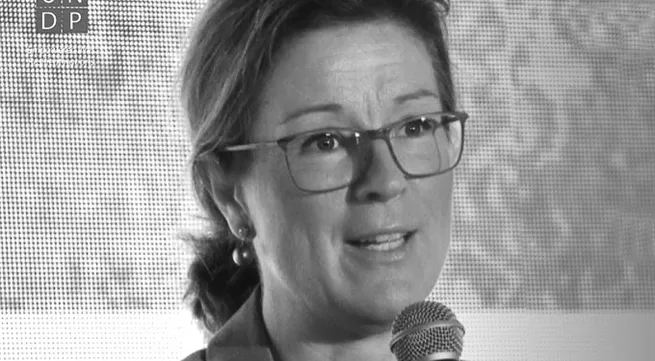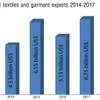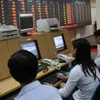VN’s 100 % renewable energy target attainable: UNDP official


|
| Louise Chamberlain, United Nations Development Programme (UNDP) country director in Việt Nam |
Green economy is the new watchword for many countries as they eye sustainable development. In Việt Nam, the Government encourages all sectors to aspire for green growth.
In 2012 the Việt Nam National Green Growth Strategy was formulated, and has been embraced by all sectors in around 40 provinces and cities. Việt Nam News speaks to Louise Chamberlain, United Nations Development Programme (UNDP) country director in Việt Nam, about the country’s green growth.
Can you tell us about the green economy and green growth concepts adopted by many countries? Why are they important?
Green economy and green growth have emerged as a solution to balance environmental sustainability and socio-economic development goals. The global agenda was set at the United Nations Conference on Sustainable development in 2012, also known as Rio+20, on the importance of building a “green economy to achieve sustainable development”, where member states followed up on the initial commitment of two decades earlier to sustainable development. These goals were later embraced by the Sustainable Development Goals (SDGs) and Agenda 2030 – altogether, seven out of 17 goals relate to climate change and environmental sustainability, showing their global importance.
While specific concepts vary from country to country, what many of them share in common is improved human well-being, social inclusion, and environmental sustainability. One green economy model city is the Fujisawa Sustainable Smart Town, which creates a concept for a smart community lifestyle and an optimum smart infrastructure to support this new way of living. Here in Việt Nam, we are pleased to note some budding greening initiatives by Đà Lạt, Hải Phòng, Đà Nẵng and HCM City. While still in the early stages, these cities are beginning to reflect on how to create a more livable environment for their citizens.
Much of the economic development in the world to date has been dependent on fossil fuels, mainly coal and gas, which cause serious environmental damage. Both the extraction of coal and its burning to make energy cause the emission of anthropogenic gases that cause global warming (leading to climate change) and have harmful effects on human health. In addition, economic growth in many countries so far has often taken place without regard for the environment and led to the depletion of a lot of natural resources such as water, forests, and bio-divergent species. When we talk about a green economy, we mean an economy that does not exhaust such resources – sustainability means that where natural resources are used, it is to an extent whereby they are not completely expended in the process; they can regenerate and continue to replenish.
The profound climate change impacts and associated risks from climate extreme events, as well as the severe environmental degradation that is visible in some industrial sites and urban developments, are a wakeup call to the world to find a better economic model towards greener development. It is a myth to think that green growth is lesser growth – on the contrary, green economy presents very high potential for simultaneously promoting economic growth, including new green jobs, reduction of environmental risks and minimising ecological scarcities.
How does the UNDP evaluate Việt Nam’s achievements under its Green Growth Strategy?
Việt Nam has achieved several important milestones in promoting greener development, but major challenges remain to be addressed. Since the adoption of Việt Nam ’s Green Growth Strategy in 2012 and the Action Plan in 2014, around 40 provinces, cities and sectors have developed and started implementing action plans. Green growth is incorporated into a number of city and provincial development strategies and plans, and mainstreamed in key sectors such as construction, renewable energy, and transportation. Việt Nam has achieved commendable results in energy efficiency in some industrial sectors thanks to implementation of the national energy efficiency programme since 2006 and energy efficiency labelling on key consumer goods. It is important that consumers in industry and the general public become aware of these standards and increasingly make conscious green choices. In the market, prices also need to reflect a premium for the environment so that the more harmful products become more expensive. This is not yet the case.
The Government of Việt Nam has shown strong commitment through developing a national SDGs action plan and the recent approval of an action plan to implement the Paris Agreement on Climate Change. As a member of the Climate Vulnerable Forum, Việt Nam has joined a number of countries in an ambitious plan to achieve 100 per cent renewable energy. This is an attainable goal, as the country has great renewable energy potential and adopted a renewable energy development strategy in late 2015. The UNDP has been providing technical support to the Ministry of Industry and Trade for preparation of a national action plan to implement this important strategy. We look forward to accelerated implementation, particularly through the Government creating a roadmap for energy reform that puts higher prices on coal-powered energy and creates profit incentives for investment in renewable energy sources such as wind and solar. Việt Nam can only make a measurable contribution to the global climate change agenda if it accelerates reform of the energy sector. Energy is the largest source of greenhouse gas emissions, projected at 471 million tonnes of CO2e and accounting for 91 per cent of total emissions in 2030.
What are the challenges the country faces?
Việt Nam is at a critical juncture where policy choices on infrastructure, energy, urbanisation, production and consumption will shape the success of its transition to green, low-emission and climate-resilient development. Without changes to its carbon-intensive growth trajectory, the country will become a major regional greenhouse gas emitter, with a projected four-fold increase in net emissions between 2010 and 2030. Việt Nam’s Revised Seventh Power Development Plan forecast coal to increase from 20 per cent of the power generation mix in 2010 to more than 50 per cent in 2030. The country also plans to build more coal-based thermal power plants in the coming years, which is of serious concern.
To begin changing this trajectory, Việt Nam needs to improve the policy framework for climate change and environmental protection, with special focus on enforcement. The Law on Environmental Protection, with a section on climate change, offers a basic framework for climate change. However, Việt Nam needs a comprehensive legal framework to support the implementation of the Paris Climate Agreement, its commitment under nationally determined contribution and achievement of the Sustainable Development Goals. So legislation – and ensuring accountability around its implementation at national, provincial, local and industry levels – is an important enabler for reform.
Secondly, the Government needs to accelerate energy sector reform, including price reform, aggressively promote investments in renewable energy and enhance transparency around the plans in this regard. Việt Nam’s Renewable Energy Development Strategy provides a good framework and initial targets for actions, and we strongly encourage further work and a higher level of ambition.
Thirdly, engagement and commitment of the private sector is essential to achieving green growth targets and addressing climate change. To make this happen, the Government needs to engage in partnerships with businesses – both international and domestic. Many outdated and energy-intensive technologies are used in various industries in Viet Nam, especially in small and medium-sized enterprises. These technologies are causing environmental pollution and greenhouse gas emissions.
Fourthly, it is important to engage all stakeholders in the green growth agenda, especially through improving awareness of environmental issues at all levels - in government and among enterprises and the general public. Awareness goes hand in hand with accelerated regulatory action and environmentally-friendly consumer behaviour, and therefore Viet Nam needs to invest tangibly in knowledge building, communication and advocacy. The media and civil society organisations have a key role to play. VNS
Tags:





